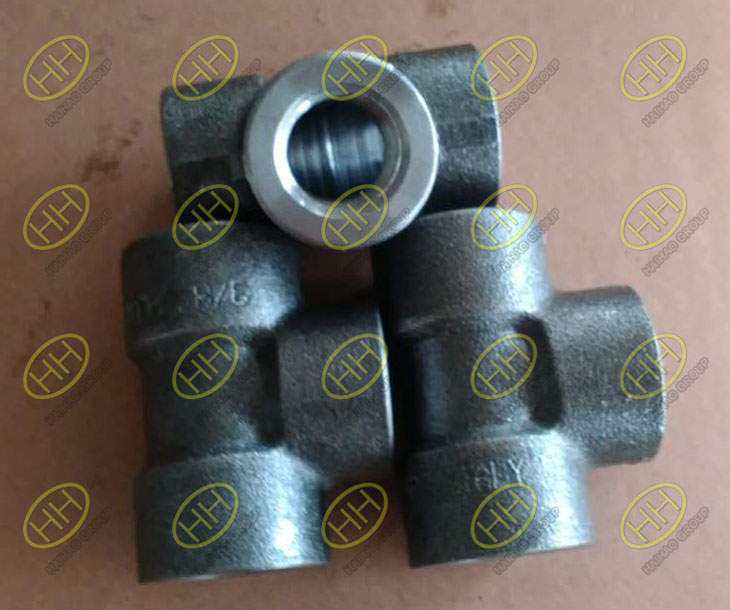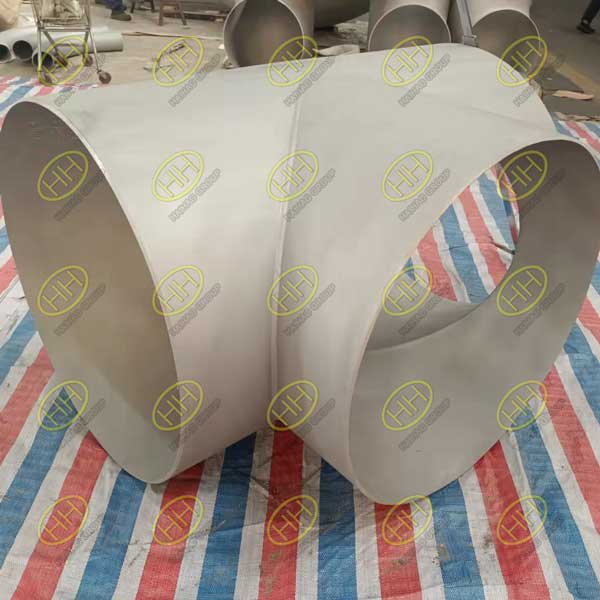The right way to install and maintain tee fittings ensuring a strong connection
Tee fittings play a crucial role in any piping system, enabling efficient flow distribution and seamless connections. To ensure the longevity and reliability of your tee installations, it is essential to follow the correct installation methods and implement proper maintenance practices. Let’s delve into the key steps and considerations for tee installation and ongoing maintenance.
Pipeline Preparation:
Before installing a tee fitting, it is vital to prepare the pipeline thoroughly. Start by ensuring that the pipe ends are clean, free from debris, and properly deburred. Remove any rust, scale, or coating from the pipe surface to facilitate a secure and leak-free connection.

ANSI ASME B16.11 threaded equal tees
Sealing Material Selection:
Selecting the appropriate sealing material is crucial for a successful tee installation. Consider factors such as the fluid type, pressure, and temperature of the system. Common sealing materials include gaskets made of rubber, PTFE (polytetrafluoroethylene), or metal rings. Choose a sealing material that is compatible with the system’s requirements to ensure effective sealing and prevent leaks.
There are several methods available for connecting tee fittings, including welding, threading, and flanging. The selection of the connection method depends on the system’s specifications, material compatibility, and intended use. Welding provides a secure and permanent connection, while threading allows for easier disassembly and maintenance. Flanged connections are commonly used for larger pipe sizes or when frequent disconnection is required.Connection Methods:
Proper Installation Steps:
Follow these steps for a proper tee installation:
- Align the tee fitting with the pipeline and ensure the correct orientation of the branches.
- Apply a suitable sealing material, such as a gasket or thread sealant, to the pipe ends and the tee fittings to ensure a reliable seal.
- Carefully insert the pipes into the tee openings, ensuring a snug fit.
- Depending on the connection method, perform the necessary welding, threading, or flanging procedures following industry best practices and standards.
- Perform a thorough inspection of the installed tee to ensure proper alignment, tight connections, and absence of leaks.
Daily Maintenance and Inspection:
To ensure the tee’s stable and safe operation, regular maintenance and inspection are crucial. Consider the following suggestions:
- Inspect the tee fittings regularly for signs of corrosion, wear, or damage. Replace any faulty components promptly.
- Check the sealing material periodically and replace it if necessary to maintain an effective seal.
- Monitor the system’s pressure and temperature regularly to ensure they are within the recommended operating limits.
- Conduct routine inspections for leaks, cracks, or any other anomalies in the tee or surrounding pipes. Address any issues immediately to prevent further damage or potential safety hazards.

Welding equal tee duplex stainless steel S32750
By adhering to proper installation methods, selecting the correct sealing materials, and implementing regular maintenance practices, you can ensure the stable and safe operation of your tee fittings. At our company, we prioritize quality, reliability, and customer satisfaction, offering a wide range of tee fittings that meet international standards and exceed expectations.
Trust in our expertise and commitment to providing high-quality tee fittings for your diverse piping needs. Contact us today to explore our comprehensive tee fitting solutions and experience the difference of reliable and long-lasting connections in your piping systems.
